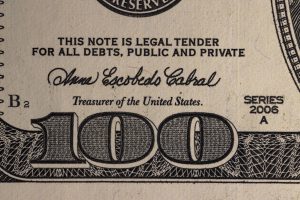In 1987, Italy decided that it would include the proceeds from criminal activity in its national accounts. Overnight, its economy grew by 18 percent, allowing Italy to surpass Britain to become the West’s fourth-largest economy. This event became known as il sorpasso (the overtaking). Should Cambodia and Laos follow suit?
A report published this year by the United States Institute of Peace (USIP) estimated that the illegal scamming industry in Cambodia is likely worth around $12.5 billion annually, half the country’s formal GDP. While the report does not provide a specific figure for Laos, one can make a calculation. The USIP derived the Cambodia figure by multiplying the conservative estimate of people working in the industry (100,000) by their average daily earnings ($350), then by the number of days in a year. The USIP estimates that 85,000 people are working in Laos’ scam industry, so that would make it approximately $10.8 billion, more than two-thirds of Laos’ formal GDP.
If accurate, including these figures in the national accounts would see Cambodia’s GDP grow overnight from around $32 billion to $44.5 billion. Laos’ GDP would surge from $14.1 billion to around $25 billion, allowing it to overtake Brunei, meaning it’s no longer the smallest economy in ASEAN.
Of course, this raises a moral dilemma. Including the scam industry in GDP figures would seemingly condone criminal activity. However, this hasn’t stopped other countries from doing so. In fact, the internationally agreed-upon guidelines for national economic accounts, known as the System of National Accounts 2008, recommend that illegal market activity be included in the measured economy. “Activities that may be illegal but productive in an economic sense include the manufacture and distribution of narcotics, illegal transportation in the form of smuggling of goods and people, and services such as prostitution,” the guidelines state.
Moreover, many illegal practices are already recorded in Laos and Cambodia’s GDP figures. It’s illegal under Lao law to forcibly evict people from their homes, but many of the country’s largest hydropower dams have been associated with land rights abuses, and their output is included in formal GDP. How much of Cambodia and Laos’ mining or brickmaking or construction or manufacturing industries engage in illegal practices yet their proceeds still go into the national accounts?
Another argument is that much of the money generated by scam conglomerates doesn’t enter the national economy; it’s laundered internationally and funneled back to China. True, but the Lao government recently stated that only about a third of export receipts re-enter the country through the banking system. Moreover, the local economy still benefits from the scam industry. Many of the workers are kept in slave-like conditions and rarely allowed to leave the compounds, yet they still need to be fed, presumably by local restaurants and markets. The compounds pay rent and utilities, and middle-ranking members of the scam industry spend money in local bars.
Indeed, the strongest argument for including the scam industry in GDP figures is that much of it must already be included in the national accounts. Many of these companies are linked to legitimate businesses. Just last month, one of Cambodia’s leading tycoons, Ly Yong Phat, and several of his companies were sanctioned by Washington for his association with the scamming industry.
I am being slightly tongue-in-cheek about including criminal activity in the national books. In many ways, this debate highlights the absurdity of obsessions with GDP and growth. Adding the scam industry to national accounts would be a paper exercise; it would change perceptions but not realities.
For instance, we constantly read that Laos is on the verge of a debt default because its national debt is now around 130 percent of GDP. In reality, Laos is facing the possibility of defaulting because its national debt is around 900 percent of government revenue, according to my estimate. Laos’ problem isn’t that its economy is too small; it’s that the government collects too little in taxes to repay its debts – a point repeatedly made by the IMF and World Bank even as they furrow their brows over the country’s debt-to-GDP ratio.
If Vientiane increased tax collection by 30 percent tomorrow, its ability to repay its debts would improve significantly, yet it would still be stuck with a 130 percent debt-to-GDP ratio. Alternatively, Laos could choose to include the $11 billion scam industry in its GDP figures, and suddenly, the debt-to-GDP ratio becomes 70 percent, meaning Laos would appear less debt-distressed, yet nothing would have changed regarding Vientiane’s ability to repay loans.
Phnom Penh could decide tomorrow to include its scam industry in GDP. Come January, it could boast that the economy grew by more than 70 percent this year. That would make Cambodia the world’s fastest-growing economy. Perhaps the ruling Cambodian People’s Party would be pleased with the optics, but probably not.
Say the USIP is right and Cambodia’s scam industry is worth $12.5 billion annually. Maybe Phnom Penh is already counting much of that, raising undesirable questions about how much the non-shadow economy is actually worth. If, say, a third of the proceeds from scamming are already included in the national accounts because formal companies are being paid by the scammers or laundering their money, wouldn’t that mean Cambodia’s non-criminal economy is actually a third smaller than is currently thought? And counting the remaining two-thirds would mean that scamming is Cambodia’s largest industry, far surpassing garment manufacturing and tourism. So, Phnom Penh is incentivized not to look too closely at this, even if that means intentionally deflating calculations about the actual size of its entire economy.

































